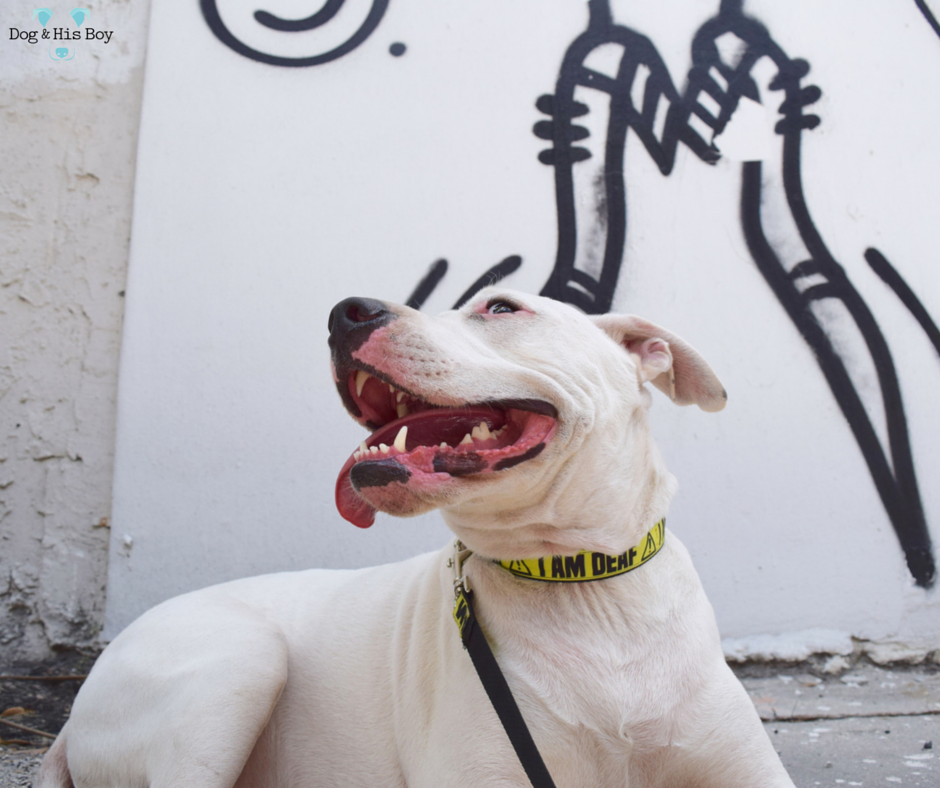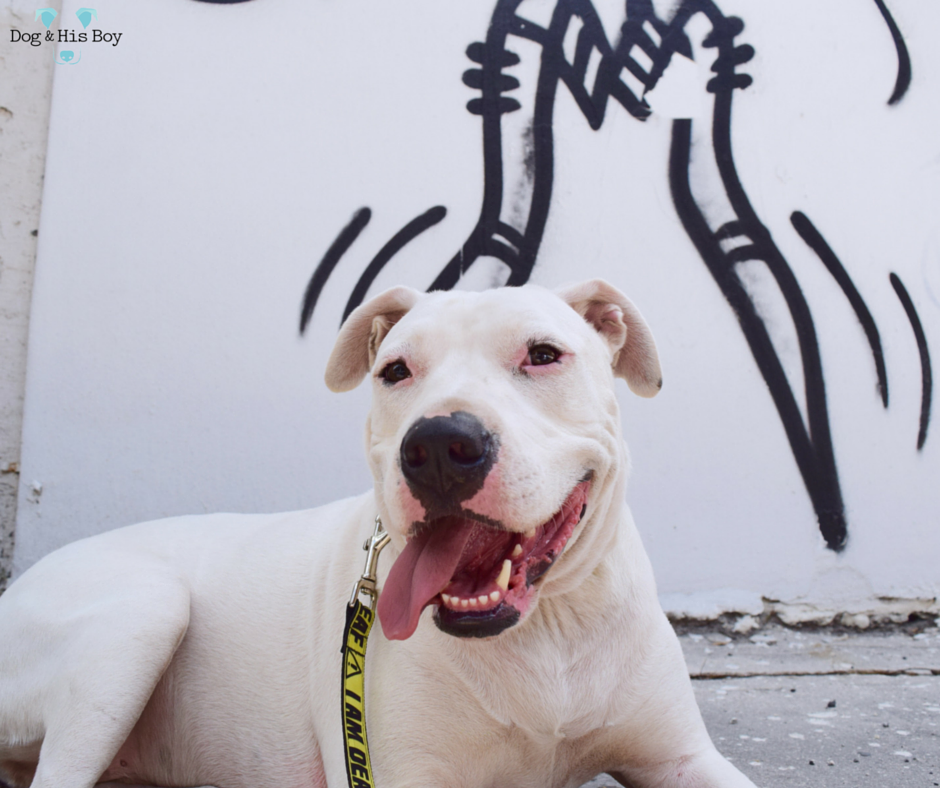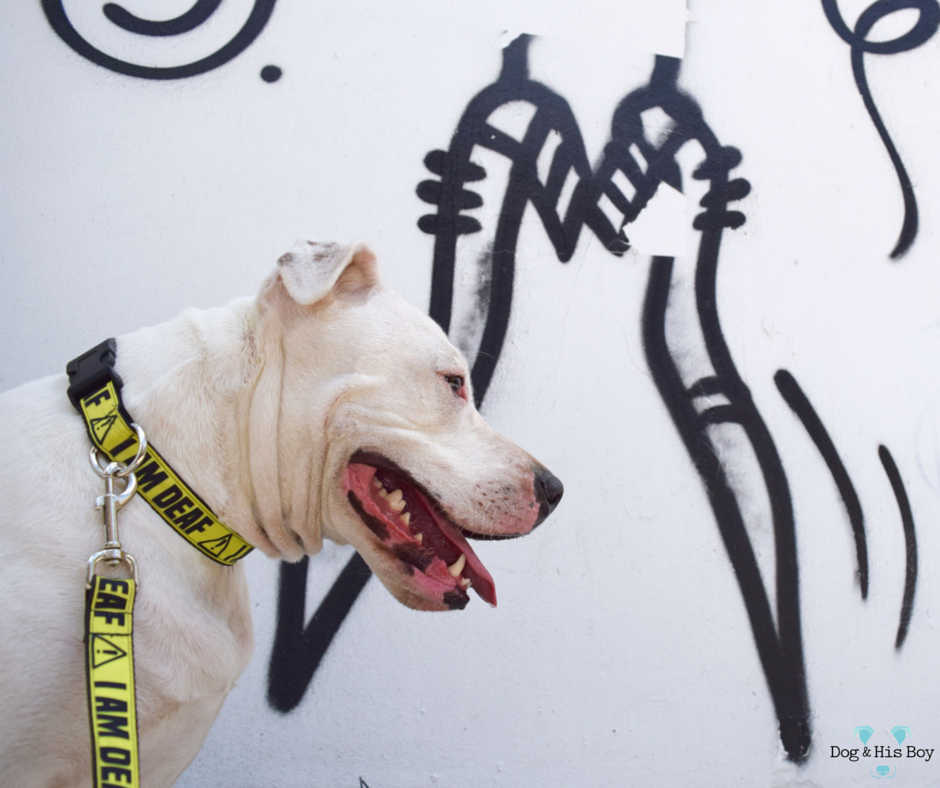Welcome our friend and guest blogger Bernard Lima – Chavez from Dog and His Boy Blog.
“How Ear Infections Can Cause Deafness In Dogs” By Bernard Lima – Chavez
Deaf dogs are amazing creatures and I am a better person because my life has been graced with two deaf dogs. I know from personal experience that deaf dogs can accomplish anything a hearing dog can. Deaf dogs can learn dozens of hand signs, become Canine Good Citizens, compete in agility, perform healing and supportive work as therapy and emotional support dogs and so much more.
As much as I adore deaf dogs, I want to prevent deafness whenever possible. I believe it’s important to educate people about the reasons a dog may be deaf, so that preventable cases can be reduced if not eliminated. For me, that is an important part of being a deaf dog advocate.
The good news is that prevention is incredibly easy. When it comes to preventing deafness, responsible breeding is critical but equally important is being a responsible pet parent.
How Do Ear Infections Cause Deafness?
Chronic or untreated ear infections are one of the primary causes of deafness in dogs and these cases are almost always preventable. One way to prevent deafness is to take good care of your dog’s ears. In order to do this, however, pet parents need to know what to look for so they can identify a potential problem early.
Left untreated, ear infections rarely get better on their own. Rather, an untreated infection rages on, painfully causing potentially serious and irreversible damage to your dog’s ears, including full or partial deafness. Extreme cases may require complicated surgical procedures, such as a total ear canal ablation, which also causes deafness.
The sooner you can identify a potential problem, the sooner your dog can seen by a veterinarian and treatment can begin. Checking your dog’s ears for signs of an infection isn’t hard and costs only a few minutes of your time. Your dog depends on you for proper care- and this includes keeping his ears as healthy as possible!
If you notice any of the following clinical signs, please take your dog to the veterinarian as soon as possible.
Can Any Dog Get An Ear Infection?
Yes, any dog can experience ear infections though some dogs are definitely at a higher risk. A dog’s breed, his specific ear characteristics, individual behavior and immune system are all factors that make some dogs more likely to have ear infections. So who’s most at risk?
* Certain Breeds: Basset Hounds, Cocker Spaniels, Labrador Retrievers and Springer Spaniels are notorious for ear infections. If your dog is one of these breeds, it’s important to pay extra attention to the health of his or her ears.
* Dogs with Long, Floppy Ears: Any dog with long floppy ears, such as Bloodhounds, Beagles or even mixed breed dogs that have adorable droopy ears are at a higher risk of getting ear infections. These long ears get wet and stay moist very easily, creating an ideal environment for yeast and fungal infections to develop and rapidly proliferate.
* Dogs with Hairy Ears: Ears that have a lot of hair inside easily trap moisture, dirt, foreign objects and debris, all of which increase the chances that an injury or infection can occur. If your dog has a lot of hair inside his ears, he may be more prone to ear infections.
What Causes Ear Infections?
There are many causes of ear infections, some of which are commonly known while others may be surprising to learn. It’s important to remember that ear infections, like deafness, can be limited to one ear (unilateral) or may affect both ears (bilateral). Some of the most frequent causes of ear infections include:
Bacterial infections
Yeast infections, such as Malassezia
Fungal infections, such as Aspergillis
Ear mites
Cuts and scratches
Traumatic injuries
Polyps or tumors
Foreign objects in the ear
What Are The Warning Signs Of An Ear Infection?
There are many clinical signs that may indicate that your dog has an ear infection. Below is a list of some of the things you should be looking for when examining your dog’s ears. You may notice some of these signs from watching his behavior or looking at his ears from a short distance, while others will require a closer look inside his ear. When examining your dog’s ears, never stick anything inside the ear, such as a Q-tip. Doing so may cause additional damage or pain.
It is a good practice to examine your dogs ears regularly. If you begin this habit when your dog is young, you will quickly desensitize him to the process and he will come to accept it when you look in his ears. In fact, if you begin each examination by first gently rubbing and scratching around his ears and then slowly begin massaging the pinna (the part of the ear that flops down or stands up), your dog will soon begin to enjoy it when you examine his ears. While massaging the pinna, you can gently turn back the ear and look inside!
The specific symptoms that your dog may experience will depend on both the cause of the ear infection as well as the severity of the infection. Even if your dog has just one of the following symptoms, it is a good idea to take your dog to the veterinarian!
* Scratching at his ear(s)
* Redness
* Foul smelling ear(s)
* Dark waxy build up
* Visible parasites
* Cuts and scratches
* Discharge
* Bleeding
* Head tilting
* Frequent shaking of his head
* Unbalanced or uncoordinated movement
What Should I Do If I Suspect My Dog Has An Ear Infection?
If you suspect your dog has an ear infection, the first thing you should do is take your dog to a veterinarian. At your appointment, the veterinarian will examine your dog and look inside his ears, with or without an otoscope.
The veterinarian may clean out the ears and examine the contents under a microscope. He or she may also collect a culture to send out to a laboratory for culture and sensitivity testing. Since any debris and waxy build up found in your dog’s ears may be examined under a microscope or sent out to a laboratory, please do not clean your dog’s ears before the appointment!
All of these diagnostic tests help your veterinary arrive at a diagnosis so she or he can begin the most appropriate treatment. If your veterinarian prescribes medication or frequent cleaning, it is important to follow his or her instructions carefully. Improper treatment can actually cause more damage than good!
Administering medication exactly as your veterinarian instructed is critically important! Just because your dog’s ears “look” better after a few days, you should administer the medication exactly as prescribed, whether that is 10 days or 3 weeks! Please also keep any follow up appointments so your veterinarian can assess your dog’s progress and make any treatment adjustments if needed.
How to Keep Healthy Ears Healthy:
Once your dog’s ears have a clean received a clean bill of health from your veterinarian, it is important to keep checking your dogs ears on a regular basis. Your veterinarian can recommend a cleaning schedule along with safe cleaning products. Since improper cleaning techniques can cause serious damage, please ask your veterinarian to show you how to safely clean your dog’s ears!
If you learn of a new product, perhaps one marketed as herbal or all-natural, or if you read about an ear cleaning recipe that you can make at home, please consult your veterinarian before trying any of these. While many of these products or recipes may be safe and appropriate for your dog, the best person to consult is your veterinarian, not Dr, Google. Just because it’s on the internet doesn’t means it’s safe- and only your veterinarian can tell you!










